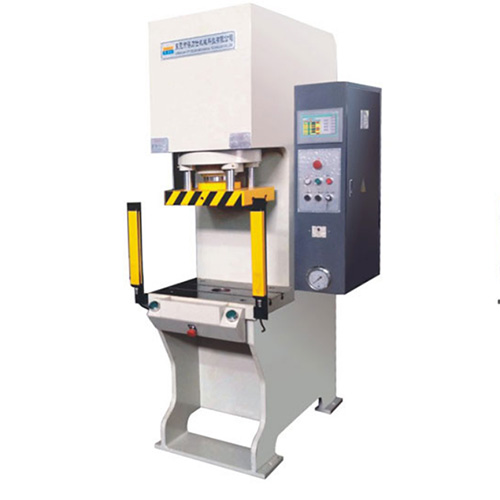C-Frame Press Design
While there may be some variations in C-frame press design, the general design consists of steel framework, hydraulic cylinder, and upper and lower platens. These are otherwise known as the slide table and the bolster table. The frame of the press is generally made from A36 steel because of its favorable characteristics and strength and makes our hydraulic C-frame presses suitable for stamping applications.
With the C-frame’s three open sides, the press can easily handle a variety of applications that include many material shapes and sizes. C-frame presses are often relied upon for applications that require smaller bed sizes and lower tonnages – although there are some exceptions.

While there can be design variations, all Goodsjack machines are designed to operate either manually OR automatically, to allow for the option of short run, or high volume production. In general, C-frame presses can also be fitted with a variety of different tooling to allow for bending, punching, cutting or straightening applications.
Benefits of a C-Frame Press
In addition to the open space made inherently available by its design, and the option to operate manually or automatically, C-frame presses offer manufacturers a variety of other benefits, including:
Minimal floor space: C-Frame presses generally take up less floor space than most other hydraulic presses (such as 4-post presses) due to their narrow and sturdy C-shaped frame.
Ease of use & efficiency: The press’ design provides minimal stroke deflection, work accessibility, increased open area, and work approach advantages.
Access points: With three access points to the operations area, C-frame presses allow for easier die maintenance and adjustments, along with removal of scrap metal and finished parts.
Cost effective: This press style is generally lower in cost as compared to other hydraulic press types.


 +86-769-8306-1993
+86-769-8306-1993
 E-mail
E-mail
